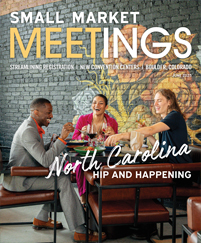The numbers tell the story. In 30 years, the Hispanic population in the United States has mushroomed, from 14.6 million in 1980 to 53 million today. Hispanics are the fastest-growing segment of the population and the country’s largest minority group at 14 percent of the population. By 2060, demographers project that 31 percent of the U.S. population will be Hispanic.
So it is not surprising that Lowe’s, Sherwin Williams, Soccer.com and other companies have turned to AC&M Group and its CEO and founder Jaime Cardenas for marketing advice and direction.
AC&M is a cultural marketing and communications firm that specializes in helping companies make cultural connections with the Hispanic market.
What was originally conceived by Cardenas and his partner as a consulting firm that would supply demographic data to businesses became a marketing firm as companies like Lowe’s asked for help in figuring out how to sell to the growing Hispanic audience.
“That was in 2000, when everyone in corporate America was starting to pay attention to the market,” said Cardenas.
Here are some of Cardenas’ insights on the Hispanic market.
The Hispanic population is changing. Growth in the Hispanic population is being fueled by the second generation. Says Cardenas, “One Hispanic is turning 18 every 30 seconds.”
Unlike their immigrant parents, the younger Hispanics speak English and Spanish, and although they appreciate and honor their cultural differences, they also consume media and marketing in the same ways that the general population does.
Unlike their parents, who can be effectively targeted through Spanish radio and television, these younger Hispanics are trickier to reach with targeted marketing messages.
The Hispanic population is moving. More than half of the U.S. Hispanic population lives in three states: California, Florida and Texas (from Population Projections) and much of the population is still clustered in large urban areas, but Hispanics are moving into other regions. The South, in particular, is seeing a surge, according to Cardenas.
As was the case for their parents, the second generation of U.S. Hispanics is moving because of jobs. This means opportunity for smaller cities that are trying to attract Hispanic meeting business, said Cardenas. A small town between two areas with significant Hispanic populations, for example Charlotte, N.C., and Atlanta, would have a strategic advantage because of location and affordability.
Second-tier and smaller cities have appeal. Family is paramount in Hispanic culture and the comforts and relative safety of small-town America appeals to Hispanic associations and businesses in search of a meeting location. Economics also plays a role in the choice of smaller cities. Because many Hispanic associations and organizations are fledgling, they also are budget conscious.
“The Hispanic associations are going to be similar in this to general associations,” said Cardenas. “Cost is going to be a consideration because a lot are new, and they don’t have a lot of resources.”
With newness comes small memberships, which makes the start-up associations a good fit for smaller cities.













